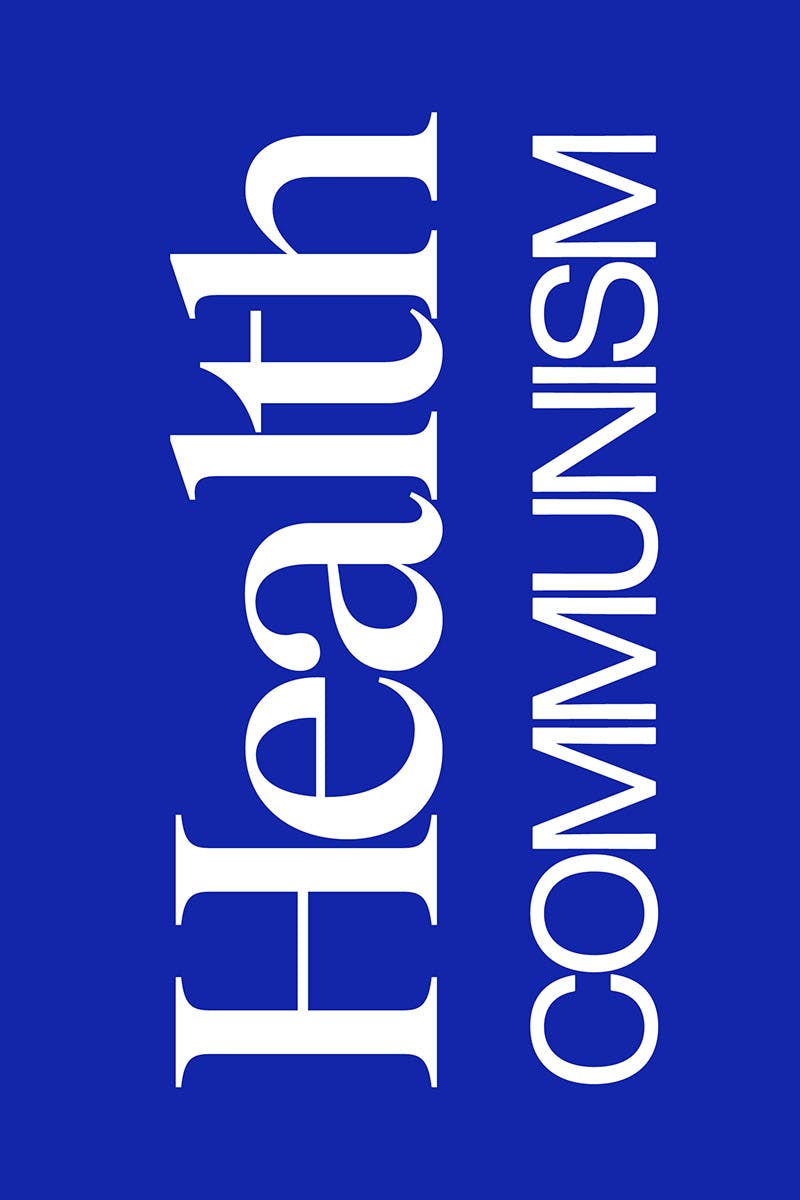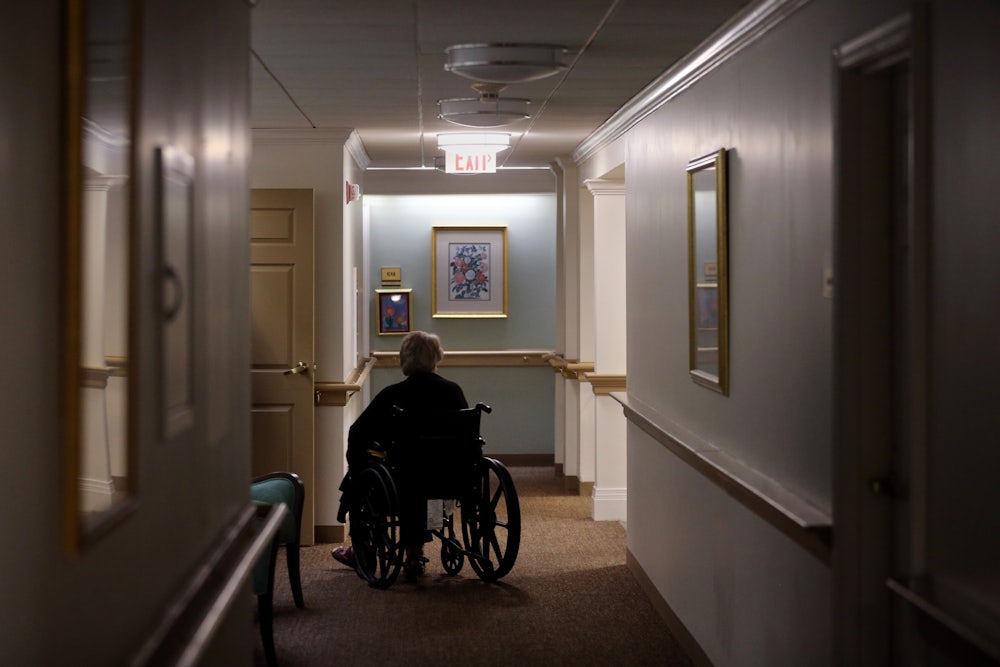I never went to Dixmont, though lots of my high school classmates and friends did. My parents mildly discouraged me from venturing up into the thickly wooded hills where it sat, not because kids went there to drink and smoke and scare each other (which they did) but because the dilapidated buildings were full of friable asbestos and the underground tunnels were probably even more structurally unsound than the buildings. The property, at the time I was a teenager, had been essentially abandoned for more than a decade.
Dixmont was named after Dorothea Dix, the nurse and reformer whose lobbying efforts were instrumental in creating the asylum system in the United States. The asylum movement, originating in the 1840s, aimed to improve the treatment of people with mental illnesses, who were typically subject to a litany of esoteric forms of abuse and neglect including, but not limited to, exorcism, bloodletting, and warehousing in jails. Dix, who worked in a jail as an English teacher, was shocked by the conditions that psychiatric patients were subjected to and made it her life’s work to advocate for more humane treatment. She spent decades campaigning for state governments to open asylums, and in this she was successful. Dixmont State Hospital in Kilbuck Township, Pennsylvania—roughly 12 miles up the Ohio River from downtown Pittsburgh—was one of the fruits of her labors. At its peak, the hospital held more than 1,000 patients in therapeutic incarceration on its (originally) state-of-the-art campus including several buildings, manicured grounds, and even its own cemetery.

The reform movements that created the asylum system produced a myriad of new problems, cruelties, and abuses in an attempt to address the old ones. Dixmont, like other institutions around the country, came to embrace the disquieting practices of mid-century psychiatry, with the extensive use of restraints (including, when it became available, the use of the antipsychotic drug Thorazine as a “chemical” restraint), hydrotherapy (worse than it sounds), and electroshock. By the 1970s, Dixmont was in financial trouble, and in 1984 it was finally closed for good. The buildings were demolished years later, and all that remains today is the overgrown Dixmont cemetery, where patients were buried after they died in the hospital.
Why and how would a reform movement dedicated to improving treatment, and to treating psychiatric patients humanely and with dignity, result in something like a Willowbrook or a Danvers? Health Communism, a recent book by Death Panel podcast hosts Beatrice Adler-Bolton and Artie Vierkant, suggests an answer: The asylum movement operated by, through, and according to the logic of surplus. (Full disclosure, in September I joined Death Panel as a co-host.)* The authors propose that, in capitalist societies, the distinction between a productive worker and an unproductive surplus drain on the public is at the heart of contemporary notions of sickness and health. The authors argue that this dividing line between worker and surplus is imaginary—and consequently that “health” is not the individual physiological state that we are accustomed to thinking of as a private property right. Rather, they argue, what we call health comes down to the capacity to perform waged work, to sustain oneself without help or public expenditure. Though the division between worker and surplus is imaginary, it is an ongoing process of negotiation and certification with real effects. The division is enforced not only by institutions like Dixmont but by the entire structure of contemporary health care.
The economic valuation of life is at the root of the variety of ills enacted by and through the health care system. Contemporary preoccupations with cost containment, the “overconsumption” of health care, and the ideological preference for “cost-sharing” or making individuals bear part or all of the “costs” of their care all flow from the economic valuation of life. This, per Adler-Bolton and Vierkant, is why the logic of health insurance in the United States relies (and must rely, stubbornly and in the face of widespread and well-known inefficiencies) on rationing and means-testing care provision. Rationing occurs first and foremost by employment status—50 percent of Americans have employer-sponsored health insurance—but also through notoriously opaque and uneven prices, ability to pay, and the variety of profit-seeking tactics insurance companies and hospital systems pursue, such as prior authorizations for certain procedures or medications.
If you’re too sick to work, you will be forced into poverty twice over: First by the loss of wages, and second, if you’re lucky, by the grueling process of securing Social Security Disability Insurance, or SSDI (a process Adler-Bolton has been through). Eligibility for SSDI is determined via strict federal determination of a qualifying disability and accrual of enough “work credits” to receive the income support payments. Supplemental Security Income, or SSI, strictly limits the assets or nonwork income that a beneficiary may have: Individual recipients may not have more than $2000 in so-called countable assets, including money in savings accounts, and to have an asset (like a piece of jewelry) exempted from the limit involves a byzantine process of actuarial determination (jewelry may be exempted if the individual can establish that they wear it regularly or that it holds sentimental significance). SSDI does not place limits on these assets, but does limit the income beneficiaries may earn through work.
The reality is that even if a person can access the SSDI benefit—Adler-Bolton and Vierkant refer to the typically two-year-or-longer application process as the “death window” for the number of people who perish waiting for their benefits to be approved—they will be subject to periodic federal reviews of their medical status to determine that they are still disabled and severely restricted in their ability to earn money above and beyond the low payments. The logic underpinning SSDI is that a person who is able to earn sufficient income through work is not disabled. The ability to work is how the bureaucratic state distinguishes the truly sick from the truly healthy; the equivalence of health with productivity determines how miserly public benefits are rationed and distributed.
Institutionalization, the process that filled asylums like Dixmont, and deinstitutionalization, the process that emptied them, are also related to the economic valuation of life. Both institutionalization and deinstitutionalization furnish examples of one of the central concepts of Health Communism, what Adler-Bolton and Vierkant term “extractive abandonment.” (Health Communism is strongly influenced by Ruth Wilson Gilmore’s 2007 abolitionist classic Golden Gulag, and their term takes off from her term “organized abandonment.”) Extractive abandonment describes how unproductive “surplus” populations are not just abandoned politically (and warehoused in a prison, asylum, or nursing home, for example) but are also exploited, as corporations and other private interests extract whatever profits they can wring from them or their care and maintenance.
The several distinct waves of deinstitutionalization, beginning around the 1950s, were in part a response to the widespread institutional abuses exposed by journalists and advocates. Yet deinstitutionalization did not always return psychiatric patients to community living, and rarely accomplished their seamless integration into community life. Instead, as the authors write, deinstitutionalization generally “redistributed the asylum’s responsibilities into a vast, chaotic network of public and private entities” like nursing homes and general hospitals.
The causes of this shift were political-economic as much as they were moral. Medicare and Medicaid, the safety-net health insurance programs in effect from 1966, were powerful drivers of deinstitutionalization. Medicaid, for example, covered psychiatric services provided in hospital settings, but not the same services provided in state-run psychiatric hospitals. This state preference for private, non-asylum care built into Medicaid (and probably motivated by the horrific reputation of state asylums, in addition to capitalistic ideology) precipitated rapid growth of acute care beds for psychiatric patients in general hospitals. The effect was to essentially privatize psychiatric care, folding it into the private health care and specifically the hospital system. Partially as a result of this, mental and behavioral care are, today, some of the most inaccessible health services. (Another brief example: since states split Medicaid costs with the federal government, states could save money by moving patients from 100 percent state-funded institutions into private, for-profit nursing homes, for which the federal government will match the state’s Medicaid contribution.) The incentives of Medicare and Medicaid funneled people in need of psychiatric care into general hospitals where their treatment generates profits for the hospital system, all while imposing costs on sick individuals.
The worker–surplus dividing line is permeable—people cross it whether they want to or not. Today’s workers are tomorrow’s surplus, and vice versa. The political economy of capitalism, not biological destiny, yoked the concept of health to economic productivity. As just one example, American psychiatry facilitated a long process of surplus-making over a period of a century, consigning people to lonely life terms in state asylums on the basis of shifting, historically contingent diagnostic criteria.
What’s more—someone (anyone) can be both worker and surplus at the same time. Until 2020, “essential worker” was an obscure administrative term that the Department of Homeland Security used to refer to workers in sectors and occupations (like health care or the power grid) crucial to national public health and safety. At the beginning of the pandemic, for a brief moment of unity, these workers were celebrated for their bravery and resilience as they showed up to extremely hazardous jobs with very little protection. Quickly and in tempo with the relentless march of Covid normalization, this term came to encompass anyone who could be impelled (either by administrative fiat or economic desperation) to resume in-person work, who didn’t have the economic or political power to work from home—that is to say, working-class people. Many epidemiological investigations conducted since the start of the pandemic confirm that working-class people have suffered and died disproportionately.
The work—of intubating patients, cleaning hospital rooms, delivering packages, stocking shelves, waiting tables, and staffing hotels so that organizations that booked in-person conferences pre-2020 don’t lose huge amounts of money—is so essential that it must not go undone. The workers, however, are treated curiously like surplus in the context of unchecked viral spread: exploited as usual, and abandoned to constant exposure to potentially debilitating or lethal harm. As Adler-Bolton and Vierkant argue, and many have said—in the world post-2020, we are all surplus. This realization has explosive political potential in that the very necessity of surplus populations to industrial capitalism carries within it both the threat and promise of refusal.
This revolutionary potential is treated in the latter chapters of Health Communism, which are devoted to one of the first and most comprehensive English-language accounts of the radical German patients’ group Sozialistisches Patientenkollektiv, or SPK. The work of SPK is the other major influence on Health Communism in both theory (“under capitalism, not all of us are sick, but none of us are well”) and practice. The title alone of the SPK pamphlet Aus der Krankheit eine Waffe machen (“make illness into a weapon”) neatly encapsulates the core argument and core purpose of Health Communism. The carpal tunnel and high blood pressure of an office worker, the missing limbs and eyes of a steelworker, the administrative and financial burdens of seeking mental health treatment, or the constellation of long-Covid symptoms affecting people from all walks of life are all evidence that, as literary critic Terry Eagleton has put it, “capitalism plunders the sensuality of the body.”
They also demarcate a class—the surplus class—with the collective power to create serious political problems and opportunities that, for example, the Biden administration has not reckoned with. Experiencing symptoms of long Covid is a problem for individual people; four million people unable to work because of symptoms of long Covid is a political and economic crisis for the government, whichever party holds it.
Mapping the connections between health, debility, and sickness is akin to a consciousness-raising activity, crucial to building the type of solidarity it will take to realize Adler-Bolton and Vierkant’s goal of “all care for all people.” Health Communism is, most fundamentally, a call for a new and expansive concept of health as a commons, a collective experience, and a collective commitment to human flourishing, freed from the ideological and financial strictures of market discipline.
In 1999, 15 years after it closed, the Dixmont property was acquired by a private family partnership. In 2005, that partnership sold the property to developers, with plans to turn the site into a shopping center with a Walmart Supercenter as the anchor. By the following year, the buildings had been demolished in preparation for the redevelopment and then, two years later, the hillside on which the property sits shrugged up and gave way in a massive landslide that temporarily covered the highway below. Walmart abandoned the plans, suing the other developers to try to recover some of its costs on its way out. All that remains today is a fenced-off section of denuded hillside, and the Dixmont cemetery.
*This article has been updated to note that the writer is a co-host of the Death Panel podcast.






